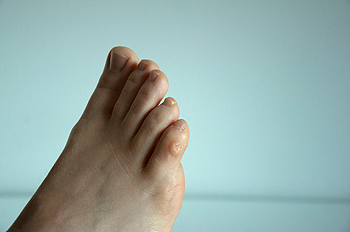The Difference Between Corns and Calluses
Tuesday, 18 October 2022 00:00
Calluses and corns on the feet are both hardened areas of skin that form as the result of repeated pressure, friction, or rubbing. If you do a lot of walking or running, and especially while wearing shoes that are new or do not fit properly, at some point you are likely to develop a corn or callus. A corn is a hardened area that generally pushes deeper into the skin and can be painful. Three types are hard corns, soft corns, and seed corns. A hard corn is usually yellow and commonly forms on the top or side of a toe. It may contain a hardened kernel in the center, which can become painful when it is under pressure from a shoe. Soft corns are whitish in color and form between the toes. They stay soft because of the moisture that builds up in the feet. Seed corns are tiny bumps that form in clusters on the bottom of the foot, frequently on the ball of the foot or bottom of the heel. A callus is generally spread over a larger area and is not normally painful. They may form on the bottom of the foot, just behind the toes, where excessive walking puts pressure on the bones. Bone deformities may play a part in developing a callus. Painful or irritating corns and calluses can be pared away by a podiatrist, who can safely perform this procedure.
Corns can make walking very painful and should be treated immediately. If you have questions regarding your feet and ankles, contact one of our podiatrists of North Bay Ankle & Foot Center. Our doctors will treat your foot and ankle needs.
Corns: What Are They? And How Do You Get Rid of Them?
Corns are thickened areas on the skin that can become painful. They are caused by excessive pressure and friction on the skin. Corns press into the deeper layers of the skin and are usually round in shape.
Ways to Prevent Corns
There are many ways to get rid of painful corns such as:
- Wearing properly fitting shoes that have been measured by a professional
- Wearing shoes that are not sharply pointed or have high heels
- Wearing only shoes that offer support
Treating Corns
Although most corns slowly disappear when the friction or pressure stops, this isn’t always the case. Consult with your podiatrist to determine the best treatment option for your case of corns.
If you have any questions please feel free to contact our offices located in Petaluma and Sonoma, CA . We offer the newest diagnostic and treatment technologies for all your foot and ankle needs.




